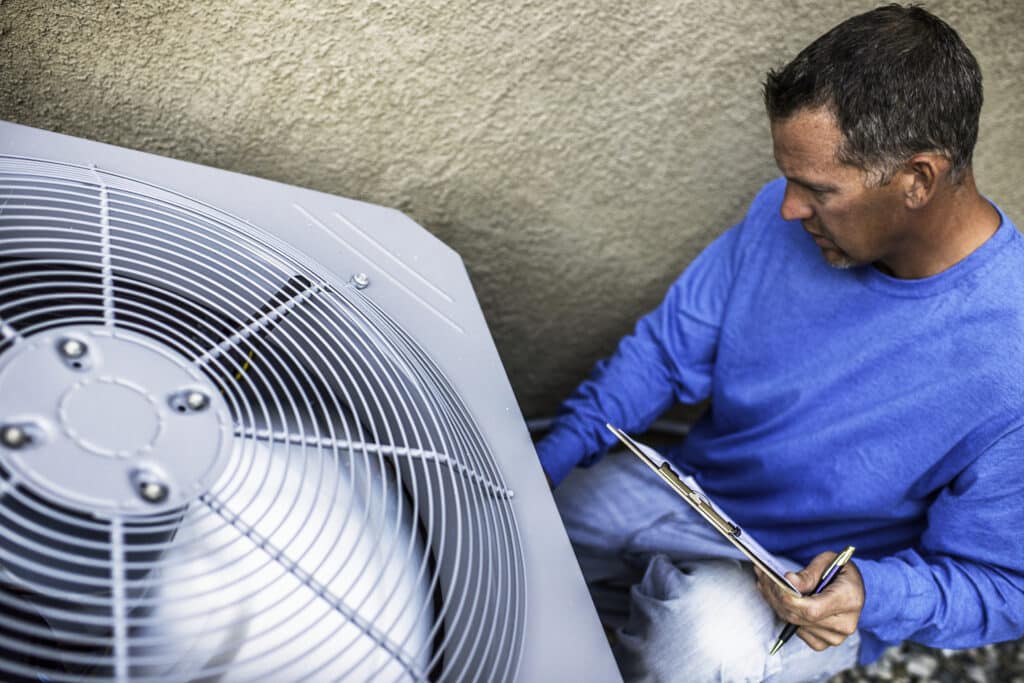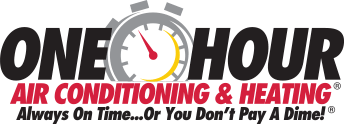
Residential HVAC Inspection Checklist: A Must-Read Guide
Have you ever wondered how to keep your home’s heating, ventilation, and air conditioning (HVAC) system in top-notch condition?
Understanding the intricacies of a residential HVAC inspection checklist can be your roadmap to ensuring your system’s longevity and efficiency. This guide is tailored just for you, providing insights into maintaining a comfortable and safe environment in your home.
In this article, we delve deep into the world of residential HVAC inspections. From what it entails to the benefits it offers, we cover every aspect to equip you with the knowledge you need.
You’ll learn the importance of regular checkups, the key components of an inspection, and how to interpret the findings. Whether you’re a seasoned homeowner or new to the realm of HVAC systems, this guide has something for everyone.

A Detailed Explanation of Residential HVAC Inspection Checklists
When it comes to maintaining your home’s comfort and safety, a residential HVAC inspection checklist is indispensable.
This comprehensive evaluation assesses various components of your HVAC system to ensure they are functioning correctly and efficiently.

What is a Residential HVAC Inspection Checklist?
A residential HVAC inspection checklist is an essential tool that HVAC professionals use to evaluate every aspect of your home’s heating, ventilation, and air conditioning system. This detailed checklist is designed to ensure that each component of your HVAC system is thoroughly inspected, maintained, and functioning at its best, providing you with optimal performance and ensuring the safety of your living environment.
The checklist covers a wide range of components, including the HVAC system’s heating and cooling units, ductwork, filters, and thermostats.
For instance, during a heating system maintenance checklist, the technician will examine the furnace or heat pump to ensure it’s heating your home efficiently and safely. Similarly, the cooling system maintenance checklist involves checking the air conditioner or other cooling units to ensure they’re ready to keep you comfortable during the warmer months.
An HVAC safety checklist is also a critical part of the inspection, focusing on identifying any potential hazards that could compromise your system’s safety or your home’s air quality. This includes checking for gas leaks in furnaces, ensuring electrical connections are secure, and verifying that the system is not emitting harmful levels of carbon monoxide.
Moreover, an energy efficiency audit HVAC is conducted to assess how well your system is using energy, potentially saving you money on utility bills and contributing to environmental conservation.
The indoor air quality assessment is another vital component, ensuring that your HVAC system is not circulating dust, allergens, or other harmful particles throughout your home.
In essence, a residential HVAC inspection checklist is your assurance that your HVAC system is evaluated comprehensively, addressing HVAC system maintenance, air conditioning evaluation, residential cooling system check, and more.
By adhering to this checklist, professionals can identify and rectify issues before they escalate, ensuring your system’s longevity, efficiency, and your home’s comfort and safety.

Understanding the Residential HVAC Inspection Checklist
When delving into a residential HVAC inspection checklist, it’s crucial to understand the breadth and depth of the examination process.
This checklist is not just a routine once-over but a detailed dive into the critical components that ensure your HVAC system operates efficiently, safely, and effectively.
Heating and Cooling Unit Inspection
The core of the HVAC system, the heating and cooling units, are meticulously inspected for any signs of malfunction or wear and tear.
This includes checking the furnace’s heat exchanger for cracks, inspecting the AC’s condenser and evaporator coils for efficiency, and ensuring that the system’s heating and cooling capacities align with your home’s requirements.
This part of the checklist aligns with the heating system maintenance checklist and the cooling system maintenance checklist, ensuring all seasonal functionalities are up to par.
Ductwork Evaluation
Ductwork is the circulatory system of your HVAC unit, distributing air throughout your home. The inspection involves checking for leaks, blockages, or damage within the ducts.
Proper ductwork evaluation prevents energy loss, improves air quality, and ensures consistent temperatures across different rooms, aligning with the HVAC ductwork inspection aspect of the checklist.
Thermostat Functionality
Thermostats are the control center of HVAC systems, and their proper functioning is crucial for energy efficiency and comfort. The checklist includes verifying the thermostat’s accuracy, ensuring it communicates correctly with the HVAC system, and confirming that it responds appropriately to user settings. This step is vital for maintaining an energy efficiency audit HVAC.
Air Filters Assessment
Air filters play a pivotal role in maintaining indoor air quality and ensuring the efficiency of the HVAC system.
The residential HVAC inspection checklist includes checking filters for cleanliness and proper fit, replacing them if necessary, and advising homeowners on regular maintenance schedules. This step is crucial for the indoor air quality assessment and contributes to the overall residential HVAC servicing process.
Safety and Efficiency
Every aspect of the inspection is geared toward ensuring the system’s safety and efficiency. This includes checking for proper ventilation, ensuring there are no gas leaks or electrical hazards, and assessing the system’s overall energy consumption.
The HVAC safety checklist and energy efficiency audit HVAC components are integral to this process, ensuring that the system is not only operational but also safe and cost-effective.
By thoroughly understanding each component of the residential HVAC inspection checklist, homeowners can gain insights into the health of their HVAC system, ensuring it operates at peak efficiency while providing a safe, comfortable living environment.
Preparing for an Inspection
Getting ready for a professional HVAC inspection is not just about tidying up; it’s about ensuring that the technician can conduct a thorough and unobstructed evaluation of your system.
Proper preparation can enhance the efficiency of the inspection and ensure that all aspects of the residential HVAC inspection checklist are thoroughly addressed.
Clearing the Area
Accessibility is Key
Ensure that the area around both your indoor and outdoor HVAC units is clear of any debris, furniture, or other obstructions.
Residential HVAC inspection checklist technicians need ample space to access and inspect the units, including the ability to remove panels or components as necessary.
This accessibility is crucial for a comprehensive inspection, allowing the technician to thoroughly evaluate components like the condenser and evaporator coils, which are essential for the air conditioning evaluation and cooling system maintenance checklist.
Outdoor Unit Considerations
For the outdoor unit, make sure there’s no vegetation overgrowth or debris blocking the airflow. This not only facilitates the inspection but also is a good practice for maintaining the unit’s efficiency.
Filter Replacement and Cleaning
Air Filter Maintenance
Replace any dirty air filters before the inspection. A clean filter allows the technician to more accurately assess the system’s airflow and efficiency, which is vital for the indoor air quality assessment and residential cooling system check.
It also demonstrates to the technician that you’re committed to maintaining the system, which can provide more context during the inspection.
Cleaning Vents and Registers
While deep cleaning isn’t necessary, ensuring that vents and registers are free from significant dust and debris can help the technician evaluate the system’s airflow and distribution efficiency, aligning with the HVAC ductwork inspection.
Documentation and Communication
Note Any Concerns
Document any issues you’ve noticed with your system, whether it’s unusual noises, inconsistent temperatures, or other concerns. This information can be invaluable to the technician, providing them with specific areas to focus on during their inspection, and enhancing the residential HVAC performance testing process.
Previous Records
If you have records of past inspections, maintenance, or repairs, have them available for the technician. This historical context can help them better understand your system’s condition and any recurring issues or previous concerns, contributing to a more informed and effective inspection.
By preparing your home and HVAC system for an inspection, you’re setting the stage for a successful and thorough evaluation.
This preparation not only facilitates the inspection process but also ensures that the technician can accurately assess and address the health and efficiency of your HVAC system, adhering to the comprehensive residential HVAC inspection checklist.
The Inspection Process
The inspection process of a residential HVAC inspection checklist is a meticulous and comprehensive examination designed to ensure every component of your HVAC system is in optimal condition. This process is crucial for maintaining the system’s efficiency, longevity, and safety.
Electrical Connections and Thermostat Functionality
Electrical Connections Check
The initial phase of the inspection involves a thorough examination of the HVAC system’s electrical connections.
Residential HVAC inspection checklist technicians ensure that all connections are secure, with no signs of wear or overheating. This step is vital for preventing electrical hazards and ensuring the system operates without interruptions, aligning with the HVAC electrical inspection for residences.
Thermostat Evaluation
The thermostat, the command center of your HVAC system, is checked for accuracy and functionality.
Technicians ensure it responds correctly to user inputs and communicates effectively with the HVAC system. This step is crucial for maintaining comfort and efficiency, resonating with the home thermostat evaluation aspect of the checklist.
Cooling and Heating Components Inspection
Condenser and Evaporator Coils Inspection
Technicians inspect the condenser and evaporator coils, crucial for the system’s cooling process.
They check for dirt, damage, or corrosion, which can impact the system’s efficiency and longevity. This inspection is a key part of the air conditioning evaluation and cooling system maintenance checklist.
Refrigerant Level Evaluation
The refrigerant levels are checked to ensure they are within the proper range.
Incorrect refrigerant levels can lead to reduced efficiency and potential damage to the system, making this step a critical component of the residential cooling system check.
Ductwork Condition Assessment
Ductwork Inspection
The ductwork is thoroughly inspected for any signs of leaks, blockages, or damage. Proper ductwork is essential for efficient air distribution and energy use, aligning with the HVAC ductwork inspection.
Residential HVAC inspection checklist technicians look for any issues that could affect airflow or quality, ensuring the system operates efficiently and effectively.
Leak and Obstruction Detection
Detecting and addressing leaks or obstructions in the ductwork is crucial for maintaining the system’s efficiency and the home’s air quality. This step prevents energy loss and ensures consistent temperature control throughout the home, an essential aspect of residential HVAC performance testing.
The inspection process is a critical component of the residential HVAC inspection checklist, ensuring every part of the system is scrutinized and maintained to provide optimal performance, safety, and efficiency.
Benefits of Regular Inspections
Conducting regular inspections using a residential HVAC inspection checklist is not just a preventive measure but a proactive approach to ensuring your HVAC system’s longevity, efficiency, and safety.
Let’s delve into the multifaceted benefits of these regular check-ups.
Prevention of Unexpected Breakdowns
Early Detection of Issues
Regular inspections allow for the early detection of potential problems before they escalate into major issues.
By identifying and addressing minor concerns, such as a worn belt or a small leak, technicians can prevent these issues from leading to unexpected breakdowns. This proactive approach aligns with the residential HVAC servicing aspect, ensuring your system remains reliable throughout the year.
Continuity of Comfort
Ensuring that your HVAC system is always operational means maintaining the comfort levels in your home.
Regular inspections help avoid the inconvenience and discomfort of system failures, particularly during extreme weather conditions, providing peace of mind and continuous comfort.
Enhancement of Energy Efficiency
Optimization of System Performance
Regular inspections can significantly enhance your system’s energy efficiency. Technicians can adjust settings, clean components, and make recommendations for improvements, all of which can reduce energy consumption.
This optimization not only aligns with the energy efficiency audit HVAC but also contributes to lower utility bills and a smaller carbon footprint.
Sustainable Operation
An efficiently running HVAC system consumes less energy and experiences less wear and tear, contributing to sustainable operation. This efficiency extends the life of the system and supports environmental conservation efforts.
Extension of System Lifespan
Longevity Through Maintenance
Regular maintenance and inspections can extend the lifespan of your HVAC system. By ensuring that all components are functioning correctly and efficiently, you can avoid the premature replacement of the system or its parts, which is in line with the residential HVAC performance testing.
Cost Savings
While there’s an upfront cost to regular inspections, the long-term savings are significant. Extending the lifespan of your system means delaying the substantial expense of replacing it, not to mention avoiding costly emergency repairs.
Safety Assurance
Protection from Hazards
Regular inspections ensure that your HVAC system is not posing any safety risks, such as electrical issues or gas leaks. This is crucial for protecting your home and family from potential hazards, aligning with the residential HVAC inspection checklist.
Indoor Air Quality
Maintaining your HVAC system through regular inspections can improve indoor air quality by ensuring that air filters are clean and ductwork is free of contaminants. This is vital for the health and well-being of your household, resonating with the indoor air quality assessment.
The benefits of regular HVAC inspections are comprehensive, touching on every aspect of system performance, safety, and efficiency. Utilizing a residential HVAC inspection checklist for these inspections ensures a thorough and effective approach to HVAC maintenance.
Interpreting the Findings
Once a thorough inspection is completed using the residential HVAC inspection checklist, the findings are compiled into a detailed report. This report is not just a collection of observations; it’s a crucial document that provides insights into the health of your HVAC system, offering guidance on necessary repairs or improvements.
Understanding the Report
Detailed Assessment
The report you receive post-inspection will detail the condition of each component checked against the residential HVAC inspection checklist. It will highlight areas in good condition, those requiring monitoring, and components that need immediate attention. This detailed assessment is crucial for understanding the current state of your HVAC system.
Recommendations for Repairs or Improvements
Based on the inspection findings, the report will include recommendations for repairs or improvements. These suggestions are aimed at addressing any issues before they become major problems, ensuring the system’s efficiency and longevity.
This aligns with the residential HVAC servicing and HVAC system maintenance aspects, providing a proactive approach to HVAC care.
Planning for Maintenance and Repairs
Prioritizing Actions
With the detailed report in hand, homeowners can prioritize the recommended actions.
Immediate concerns that could lead to system failure or safety hazards should be addressed first, followed by less critical recommendations that could improve system efficiency or extend its lifespan, such as those found in the residential HVAC inspection checklist.
Budgeting for HVAC Care
The report also allows homeowners to plan financially for any upcoming maintenance or repairs.
By having a clear understanding of what needs to be done, you can budget accordingly, ensuring that necessary work is completed without financial strain.
Long-Term HVAC System Health
Preventive Measures
The findings from the inspection report can guide homeowners in taking preventive measures to avoid future issues.
This might include regular cleaning, filter changes, or scheduling follow-up inspections, all of which contribute to the system’s long-term health and efficiency, as highlighted in the residential HVAC performance testing.
Enhancing Comfort and Safety
By acting on the inspection report’s findings, homeowners can enhance the comfort and safety of their living environment.
Ensuring that the HVAC system is in optimal condition means maintaining a consistent and comfortable indoor temperature and air quality, aligning with the goals of the residential hvac inspection checklist.
Interpreting the findings from a residential HVAC inspection is a critical step in maintaining the system’s health, efficiency, and safety. The detailed report provides a roadmap for homeowners to ensure their HVAC system continues to operate effectively, contributing to a comfortable and safe home environment.
Professional vs. DIY Inspections
When it comes to maintaining your HVAC system, there’s a significant difference between what you can do yourself and what should be left to professionals.
While DIY maintenance can play a crucial role in the system’s upkeep, a professional inspection using a residential HVAC inspection checklist is indispensable for a thorough and accurate assessment.
DIY Inspections: What Homeowners Can Do
Basic Maintenance and Cleaning
Homeowners can undertake basic maintenance tasks such as replacing air filters, cleaning around the outdoor units and ensuring there are no obstructions to airflow. These simple actions can help maintain the system’s efficiency and prevent some common issues.
Regular Observations
Regularly observing the system’s performance can also be beneficial. Homeowners can note any unusual noises, smells, or fluctuations in heating and cooling effectiveness.
While these observations are valuable, they are not a substitute for a professional inspection but can provide useful information to technicians during their evaluation.
Professional Inspections: The Need for Expertise
Comprehensive System Evaluation
Professional HVAC technicians use the residential HVAC inspection checklist to conduct a comprehensive evaluation of the system.
This includes checking components that are not easily accessible to homeowners, such as internal electrical connections, condenser and evaporator coils, and refrigerant levels, which are crucial for the system’s air conditioning evaluation and heating system maintenance.
Expertise and Experience
Professionals bring expertise and experience to the inspection process, allowing them to identify potential issues that may not be obvious to the untrained eye.
They can detect subtle signs of wear and tear, improper installation, or impending failures that could lead to costly repairs if not addressed.
Advanced Diagnostic Tools
HVAC professionals use advanced diagnostic tools that go beyond what a typical homeowner has access to. These tools can detect leaks, measure refrigerant levels accurately, assess airflow, and more.
This level of diagnostic capability is essential for a thorough inspection and aligns with the residential HVAC performance testing and HVAC electrical inspection for residences.
Safety Considerations
Professional technicians are trained to handle the various hazards associated with HVAC systems, including electrical components, refrigerants, and gas lines.
Their expertise ensures that the inspection is conducted safely, mitigating risks to themselves and the homeowners, which is a critical aspect of the HVAC safety checklist.
While homeowners can and should perform regular basic maintenance and observations, a professional inspection is crucial for a comprehensive evaluation of the HVAC system.
Residential HVAC inspection checklist professionals bring the necessary expertise, experience, and tools to the task, ensuring that the system is thoroughly inspected and maintained, which is essential for its efficiency, longevity, and safety.
Optimizing Your HVAC System for Enhanced Performance
Ensuring your HVAC system operates at its best not only contributes to a comfortable home environment but also to energy efficiency and cost savings.
Beyond the standard residential HVAC inspection checklist, there are additional strategies you can employ to optimize your system’s performance.
Embrace Preventative Maintenance
Preventative maintenance goes beyond the occasional check-up; it’s about regular monitoring and timely intervention to ensure your HVAC system remains in peak condition.
Establishing a routine maintenance schedule can prevent minor issues from escalating into major problems, ensuring your system operates efficiently throughout the year.
Upgrade to Energy-Efficient Equipment
If your HVAC system is outdated, consider upgrading to more energy-efficient models.
Modern HVAC systems are designed with energy efficiency in mind, offering superior performance while consuming less energy. This upgrade can be a significant upfront investment, but the long-term savings on energy bills and the enhanced comfort levels in your home can be well worth it.
Utilize Zoning Systems
Implementing zoning systems in your home can significantly enhance the efficiency of your HVAC system.
By dividing your home into different zones, you can control the temperature in each area independently, reducing the energy wasted on heating or cooling rarely used spaces. This targeted approach ensures that your residential HVAC inspection checklist is not just about maintenance but also about smart energy use.
Improve Home Insulation
The insulation in your home plays a crucial role in maintaining temperature stability.
By enhancing your home’s insulation, you can reduce the workload on your HVAC system, as well-insulated homes retain heat during winter and cool air during summer more effectively. This improvement can lead to significant energy savings and a more comfortable living environment.
Regularly Check System Calibration
Ensuring that your HVAC system’s calibration is accurate is crucial for its efficiency.
An improperly calibrated system can lead to unnecessary energy consumption and uneven temperatures within your home. Regular checks can ensure that your system is operating as intended, providing optimal comfort and efficiency.
Educate Household Members
Educating everyone in your household about the importance of HVAC maintenance and efficient energy use can contribute to your system’s longevity.
Simple practices like ensuring windows and doors are sealed when the HVAC system is running can make a significant difference in its efficiency.
Consider Professional Energy Assessments
Professional energy assessments can provide deeper insights into how your HVAC system interacts with other elements of your home. These assessments can identify areas where energy is being wasted and recommend specific improvements to enhance overall efficiency.
By incorporating these strategies into your approach to HVAC maintenance, you can ensure that your system provides optimal performance, comfort, and energy efficiency. Regularly referring to your residential HVAC inspection checklist while implementing these additional measures can transform your HVAC system into a model of efficiency and reliability, ensuring your home remains a haven of comfort regardless of the season.
Enhancing HVAC Longevity and Efficiency
Maintaining your HVAC system’s longevity and efficiency requires a multifaceted approach.
By integrating advanced strategies and regular checks into your residential HVAC inspection checklist, you can ensure that your system remains reliable and efficient over the years.
Innovative Technologies for HVAC Systems
Smart HVAC Technologies
Integrating smart technologies into your HVAC system can lead to significant improvements in efficiency and user control.
Smart thermostats, for instance, learn your schedule and adjust temperatures accordingly, reducing energy waste. Additionally, HVAC systems equipped with smart sensors can detect issues early, prompting maintenance before problems escalate, a crucial aspect of your residential HVAC inspection checklist.
Energy Recovery Ventilators (ERVs)
Energy Recovery Ventilators are an excellent addition to any HVAC system, particularly in tightly sealed homes.
ERVs exchange the stale indoor air with fresh outdoor air, recovering heat or coolness from the exchanged air, thus enhancing your HVAC system’s efficiency and ensuring better indoor air quality.
Seasonal Adjustments and Maintenance
Preparing for Seasonal Changes
As seasons change, your HVAC system’s requirements shift. Preparing your system for these changes is crucial.
For instance, before summer, ensure your AC’s refrigerant levels are adequate, and the system is free from leaks. Similarly, in preparation for winter, check your heating system’s components, like the heat exchanger and ignition system, as part of your residential HVAC inspection checklist.
Regular Seasonal Maintenance
Seasonal maintenance is not just about a one-time check; it’s about ongoing vigilance. Regularly replacing filters, cleaning ducts, and checking system calibration can prevent seasonal wear and tear, ensuring your HVAC system operates efficiently year-round.
Enhancing System Efficiency with Upgrades
Ductwork Optimization
Improving your ductwork can significantly enhance your HVAC system’s efficiency. Sealing leaks, insulating ducts, and ensuring proper layout can improve airflow and temperature control, vital components of your residential HVAC inspection checklist.
System Upgrades
If your HVAC system is older, consider upgrading to a more energy-efficient model. Newer systems are designed with the latest technologies to provide better comfort and efficiency.
While the upfront cost can be significant, the long-term savings in energy bills and reduced repair costs can be substantial.
By adopting these strategies and incorporating them into your residential HVAC inspection checklist, you can significantly enhance your HVAC system’s longevity and efficiency. Regular maintenance, coupled with strategic upgrades and the use of smart technologies, can ensure that your system provides optimal performance while keeping your energy costs in check.
Top 5 Best Practices for a Residential HVAC Inspection Checklist
Ensuring the efficiency and longevity of your HVAC system involves a comprehensive approach to maintenance.
Here are the top five strategies, derived from expert sources, to guide you through a residential HVAC inspection checklist.
Air Filter Maintenance
Importance of Clean Air Filters
Regularly checking and replacing air filters is a cornerstone of HVAC maintenance.
Clean filters are essential for maintaining optimal airflow and air quality, preventing airborne particles like dust, pollen, and pet dander from circulating in your home. This not only protects the HVAC system from damage but also ensures healthier indoor air for you and your family.
Impact on Efficiency and Costs
Dirty or clogged filters force the HVAC system to work harder, which can lead to increased energy consumption and higher utility bills.
Regular filter maintenance is a simple yet effective way to enhance your system’s efficiency and reduce energy costs.
Thermostat Inspection
Calibration and Functionality
The thermostat controls the HVAC system’s operation, making its accuracy crucial for maintaining the desired indoor temperature.
An improperly calibrated thermostat can cause the system to overwork, leading to unnecessary energy consumption and wear and tear on the system.
Enhancing System Effectiveness
Regular thermostat inspections ensure that your HVAC system responds accurately to your temperature settings, optimizing comfort and efficiency. This involves checking the thermostat’s settings, programming, and communication with the HVAC system.
Ductwork Examination
Detecting and Addressing Leaks
Inspecting the ductwork is vital for identifying leaks or blockages that can compromise the system’s efficiency.
Leaky ducts can result in significant energy loss, as heated or cooled air escapes into unoccupied spaces instead of circulating throughout your home.
Ensuring Comfort and Efficiency
Proper ductwork maintenance ensures that air is distributed evenly and efficiently, maintaining consistent temperatures in all rooms and reducing strain on the HVAC system.
Electrical Connections Check
Safety and System Performance
Loose or corroded electrical connections can pose safety hazards and affect the HVAC system’s performance. Regular checks help prevent electrical issues that can lead to system malfunctions or inefficiencies.
Preventing Potential Hazards
Ensuring that all electrical components are secure and in good condition is crucial for the safe operation of your HVAC system, helping to avoid potential risks and ensuring reliable performance.
Condensate Drain Maintenance
Preventing Water Damage and Mold
The condensate drain removes water produced during the cooling process. A clogged drain can cause water to back up, leading to potential water damage, increased humidity, and mold growth, which can affect your home’s structure and air quality.
Essential for System Health
Regular maintenance of the condensate drain is crucial for preventing these issues, ensuring that your HVAC system operates efficiently and maintains a healthy indoor environment.
By following these key strategies in your residential HVAC inspection checklist, you can ensure your system operates efficiently, prolong its lifespan, and maintain a comfortable and healthy living space.

One Hour Air Conditioning & Heating of Dallas: Your Trusted Partner
When it’s time for a comprehensive evaluation of your HVAC system, One Hour Air Conditioning & Heating of Dallas emerges as a dependable ally. Their expertise in the field ensures that your residential HVAC inspection checklist is executed with precision, guaranteeing your system’s optimal performance and longevity.
Unmatched Expertise and Comprehensive Services
Seasoned Professionals
The team at One Hour Air Conditioning & Heating of Dallas is not just a group of technicians; they are seasoned experts in the HVAC field.
With extensive experience, they are adept at handling all facets of HVAC inspection, ensuring nothing is overlooked. From air filter inspection for homes to HVAC electrical inspection for residences, their expertise ensures a thorough and detailed examination of your system.
Wide-Ranging Inspection Services
Their service offerings are comprehensive, covering every possible aspect of HVAC maintenance.
Whether your system requires a cooling system maintenance checklist or a heating system maintenance checklist, they have the tools and knowledge to ensure every component is functioning at its best. This thoroughness helps in identifying potential issues before they escalate, saving you time and money in the long run.
Customer-Centric Approach and Wide Service Reach
Tailored Solutions
Understanding that each home has unique needs, One Hour Air Conditioning & Heating of Dallas adopts a customer-centric approach.
They tailor their services to meet the specific requirements of your HVAC system, ensuring personalized solutions that align with your home’s needs. This bespoke service ensures that your HVAC system is not just maintained but optimized for your comfort and efficiency.
Extensive Service Coverage
Their services are not limited to a single location. One Hour Air Conditioning & Heating proudly serves a wide array of locations, including Addison, TX, Allen, TX, Carrollton, TX, Dallas, TX, Frisco, TX, Irving, TX, Lewisville, TX, McKinney, TX, Plano, TX, Richardson, TX, and The Colony, TX.
This extensive coverage ensures that a vast number of residents have access to their top-tier HVAC inspection services, ensuring communities remain comfortable and HVAC systems operate efficiently.
Engage with One Hour Air Conditioning & Heating
Discover the difference that professional HVAC inspection services can make. With One Hour Air Conditioning & Heating of Dallas, you’re not just getting an inspection; you’re ensuring the health, efficiency, and longevity of your HVAC system. Learn more about their services and how they can assist you in maintaining an optimal home environment with a comprehensive residential HVAC inspection checklist.
Conclusion
Maintaining an efficient and reliable HVAC system is crucial for the comfort, safety, and energy efficiency of your home.
Utilizing a comprehensive residential HVAC inspection checklist is key to ensuring that every component of your system is functioning optimally. From air filter inspections to HVAC electrical evaluations, each aspect of the checklist plays a vital role in the system’s overall performance.
One Hour Air Conditioning & Heating of Dallas stands out as a premier service provider, offering expert, tailored services across a range of locations, including Addison, TX, and Plano, TX.
Their customer-centric approach ensures that your specific HVAC needs are met, whether it involves a cooling system maintenance checklist or a heating system maintenance checklist.
By choosing such seasoned professionals, you’re not just investing in routine maintenance; you’re investing in the longevity and efficiency of your HVAC system, ensuring it provides consistent comfort and safety for your home.
Remember, regular HVAC inspections can prevent unexpected breakdowns, enhance energy efficiency, and extend the lifespan of your system.
Engage with a trusted partner like One Hour Air Conditioning & Heating of Dallas to ensure your HVAC system remains in top condition, safeguarding your home’s comfort and efficiency year-round.

FAQs: Unveiling the Essentials of HVAC Inspection
-
What is included in a residential HVAC inspection checklist?
A comprehensive HVAC inspection covers various components, including air filters, ductwork, electrical connections, and the condensate drain. It ensures each part is functioning correctly, efficiently, and safely.
-
How often should I have my HVAC system inspected?
It’s recommended to have your HVAC system inspected at least once a year. However, bi-annual checks, especially before major heating and cooling seasons, can further ensure your system’s efficiency and longevity.
-
Can I perform an HVAC inspection myself?
While homeowners can conduct basic maintenance, such as changing filters or cleaning around units, a professional inspection is crucial for a detailed evaluation, ensuring all components are in optimal condition.
-
What are the benefits of a regular HVAC inspection?
Regular inspections can prevent unexpected breakdowns, enhance energy efficiency, extend the system’s lifespan, and ensure your home’s air quality is healthy and clean.
-
How can One Hour Air Conditioning & Heating of Dallas assist me with my HVAC inspection?
With their expertise and comprehensive services, they can provide a detailed inspection of your HVAC system, identifying any potential issues and offering solutions to ensure your system’s efficiency and reliability.
Have you experienced the benefits of a thorough HVAC inspection?
Share your thoughts or ask questions about how a residential HVAC inspection checklist can transform your home’s comfort and efficiency. Your insights not only enrich our community but also help others understand the importance of regular HVAC maintenance.






